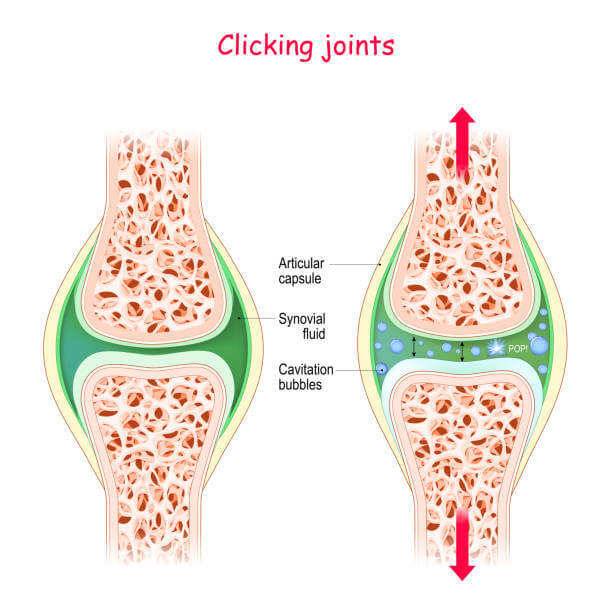You should not be disturbed by the sound of “knocking” that can be heard from your joints as you walk or get up and down.
Contrary to some people’s beliefs, these sounds are caused by involuntary fractures of the colic or a sign of joint problems or osteoarthritis, but these perceptions are not necessarily true, because the sound of the joint is not always due to fractures of the colic and some of our joints Doing certain movements or making noises when walking without causing us serious problems or being a sign of a specific skeletal or joint disease.
Joint ringing is not a disease. Joint ringing is usually not important if it is not accompanied by pain, but if it is accompanied by joint pain and inflammation or swelling, it should be examined for the possibility of osteoarthritis and loose joints.
In many cases, ringing in the joints is genetic or congenital and is caused by the joints sticking together, ligaments or congenital bone lesions overlapping. So if you notice such noises in your joints, take away the worry without feeling pain or inflammation in your joints or experiencing movement limitations.
Bursting gas bubbles between the joints
You may be interested to know that joint fluid in the body causes two joint surfaces to stick together, and if these two surfaces separate, it produces a sound that is caused by the bursting of a gas bubble. In fact, the gas dissolved in the joint fluid forms a bubble and bursts.
Because it is carbon dioxide, it takes about a quarter of an hour to dissolve. Because of this, it will be possible to intentionally break the gas bubbles between the joints that some people try at intervals.
Involuntary ringing in the joints is caused by the congenital entanglement of the joints and the bursting of a gas bubble between the joints. Do not forget that advanced osteoarthritis in old age can also cause a “squeaky” sound from the joints. The cause of this sound, which is heard especially in the knees of the elderly, is the loss of cartilage between the bones in the joint, which causes the bones to be placed directly on top of each other and gradually their surface is shaved and scratched. Joint wear and tear in old age is also limited to control treatments such as lifestyle modification, sitting posture, medication and physiotherapy.
According to physical therapists, the sound of joints in young people, especially in the knee, ankle, shoulder or pelvic joint, is not related to wear and tear, and the root of these sounds is sometimes inside the joint itself and sometimes in the surrounding tissues. A part of the tissue inside or around the joint is congenitally abnormal and moves to another part and then is released, which does not require treatment.
Do not intentionally break your joints
Avoid doing this if you like to stretch your fingers or bend them in a direction to feel comfortable with the sound. This deliberate action causes the joints to become large and asymmetrical, and after a while to return to normal.
Some experts believe that there is a possibility that by repeating this movement, the tissues around the joint will be damaged. It may even gradually limit the range of motion of the joint and reduce the strength of the fist and in the future osteoarthritis.
Vocal joint lesions
Physiotherapists emphasize that the sound from the joints is sometimes caused by a real lesion in the joint that may even require surgery.
Lesions such as rupture of the meniscus of the knee or inflammation between the tendons in the knee as well as rupture of the rotator cuff tendon are associated with pain and joint sounds and should be treated immediately. In short, any joint sound that is accompanied by pain and limited mobility should be treated seriously.

